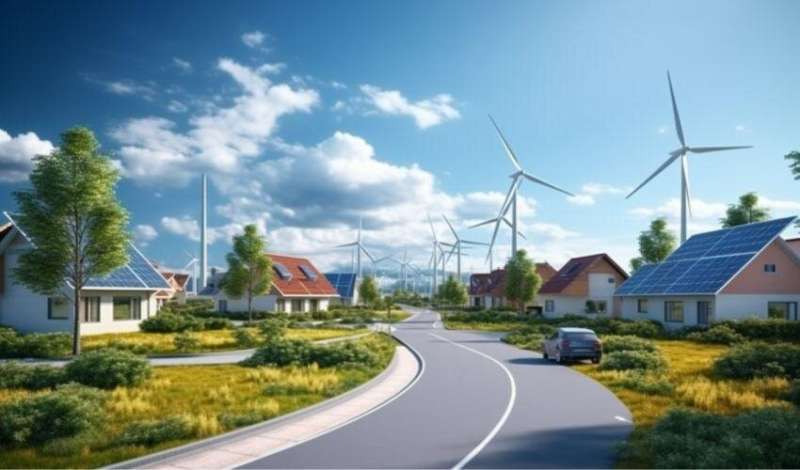This article has been reviewed according to Science X's editorial process and policies. Editors have highlighted the following attributes while ensuring the content's credibility:
fact-checked
peer-reviewed publication
proofread
New life for energy communities, thanks to self-generation and power sharing

Energy communities represent a new form of energy organization and management involving different actors within a local community. They are models of collective self-consumption, sharing locally produced energy with a strong involvement of citizens, businesses and local authorities in their development and implementation.
The earliest examples of energy communities developed at the end of the 19th century in several European countries (notably in Italy as community initiatives for the electrification of alpine areas) and were revived with the development of renewable energy sources (in the 1970s in Denmark the first wind cooperatives were set up). Since the 2000s they have grown as bottom-up initiatives and as a possible new model for citizen and local community engagement in the energy transition.
The latest European Directives define energy communities for the first time as legal entities and active players in European energy systems, starting a process of development of new initiatives that led to an evolution of the sector in the member countries, including Italy.
Chiara Candelise, of Bocconi's GREEN research center and author of the 2020 article "Status and Evolution of the Community Energy Sector in Italy" with Gianluca Ruggieri of the University of Insubria, has long been studying energy communities. Together with Ruggieri, she also wrote the essay "The Community Energy Sector in Italy: Historical Perspective and Recent Evolution" that appeared in the book "Renewable Energy Communities and the Low Carbon Energy Transition in Europe."
"The new European directives on energy communities have two main objectives. The first is technical: they are intended to enable and indeed facilitate self-consumption from intermittent, renewable sources, maximizing local self-consumption and, consequently, reducing the impact on grids," explains Candelise.
"The second objective has a more strictly regulatory nature because, in line with developments in the sector prior to the European Directives, energy communities are defined and regulated as open participation entities of individuals, small and medium-sized enterprises and local authorities belonging to the same community on a voluntary basis. Moreover, their main priority must be to achieve positive economic, social and environmental impacts on the communities they serve, rather than financial profits."
Energy communities offer several advantages. First, they enable individuals and companies to become active participants in the energy system, rather than merely passive consumers. Each community member can contribute his or her own energy production, which can be fed into the grid and shared with other members. This promotes local energy production from renewable sources, reducing dependence on traditional, centralized sources.
"We have been busy mapping existing energy communities. A first extensive survey of 29 countries that I have cooperated [with] has already recently been published in Scientific Data. It is an inventory of more than 10,000 initiatives and 16,000 generating units, which among other things includes data that can be used for further analysis of the sector in Europe.
"Another ongoing activity is to produce a methodologically sound assessment of their economic, social and environmental impacts. Both of these efforts are part of the European COMETS (Collective Action Models for the Energy Transition and Social Innovation) project of which Bocconi is a member," Candelise continues. "This is very important work because it will serve as informed evidence on the impacts of these initiatives as groundwork for policy decisions, both at the national and European level."
The GREEN Bocconi research center is also a technical partner of the IFEC (Italian Forum of Energy Communities), promoted by the World Energy Council to explore and share best practices on the topic of energy communities.
More information: August Wierling et al, A Europe-wide inventory of citizen-led energy action with data from 29 countries and over 10000 initiatives, Scientific Data (2023). DOI: 10.1038/s41597-022-01902-5


















